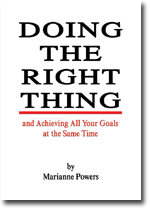Star Stuff (Continued)
Happiness
Sadness
Love
Hate
Compassion
Prejudice
Courage
Fear
Understanding
Confusion
One of the World Champions of Public Speaking, David Brooks, gave a talk recently where he told us that there are only six emotions: happiness, sadness, surprise, fear, disgust anger. It struck me that there were only two positive emotions in the six. I wondered why he thought that and what other people thought.
I found out that most of the scientists that study emotions agree on those six, because physiological changes can be detected when people are experiencing them. I found references to them on the web from the University of Virginia and the University of Pittsburgh.
I started searching for other numbers of emotions. In all cases, these are “basic emotions”. Almost everyone agrees that there are hundreds of emotions, but most of them are considered to be secondary. For instance, some people say that anger comes from fear. I found the following:
Two emotions: love and fear – 1 out of 2 positive
(A Course in Miracles, Foundation for Inner Peace)
Three emotions: mad, sad, glad – 1 out of 3 positive
(Emotion cards for children, A Place of Our Own)
Four emotions: happiness, anger, fear, pain – 1 out of 4 positive
(Chemainus First Nation, a native tribe)
Five emotions: anger, boredom, happiness, neutral, sadness – 2/5
(Mandarin speech based emotion classification, Tatung University)
Six emotions: happiness, sadness, surprise, fear, disgust, anger – 2/6
(Emotions on which experts generally agree, University of Virginia)
(Universal emotions, University of Pittsburgh)
(David Brooks)
Seven emotions: joy, anger, melancholy, worry, grief, fear, fright – 1/7
(Traditional Chinese Medicine)
Eight emotions: anger, fear, pain, joy, passion, love, shame, guilt – 2/8
(The Meadows Treatment Center for trauma and addiction)
Nine emotions: joy, sadness, love, jealousy, hope, peace, fear, loneliness, jazbaat – 5/9
(Hindu music album, Nine Emotions, One Voice)
I also found a reference on a professor, Jonathan Haidt, at the University of Virginia who was trying to define a “new” emotion: elevation. The article describes it this way:
A warm or glowing feeling in the chest, tears welling up, perhaps even chills and a clenching of the throat. A desire to connect with the person you’ve been watching. A new inclination to participate in charitable activities. If you feel these things, chances are that you have just witnessed something uplifting and may be experiencing the unofficial emotion of “elevation.”



0 Comments:
Post a Comment
<< Home